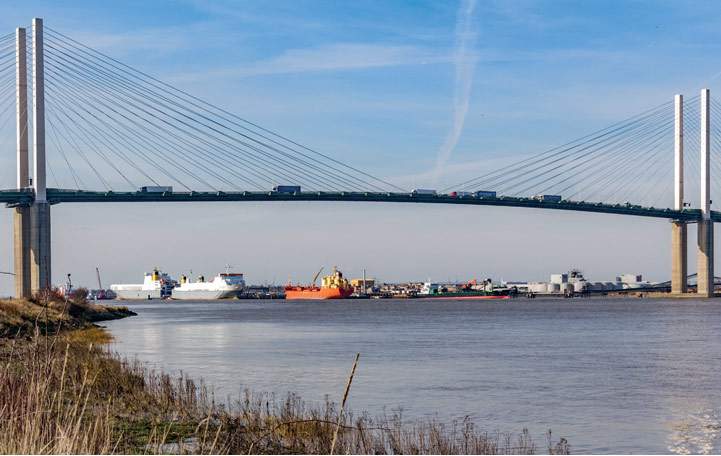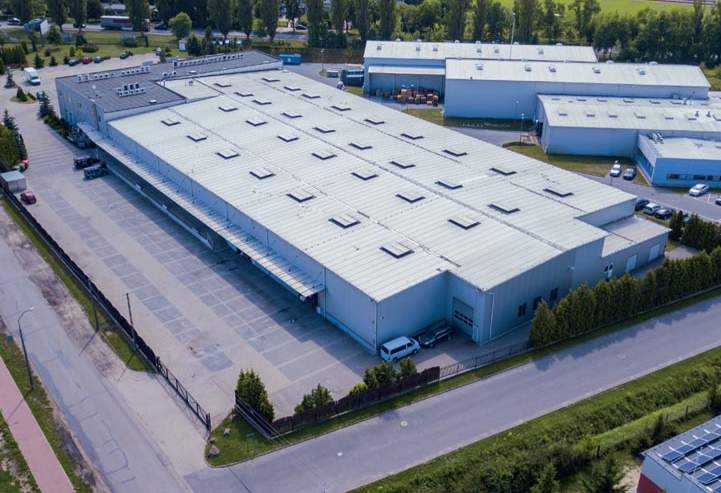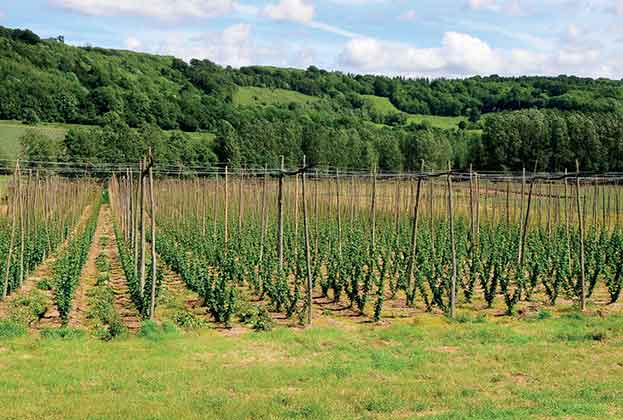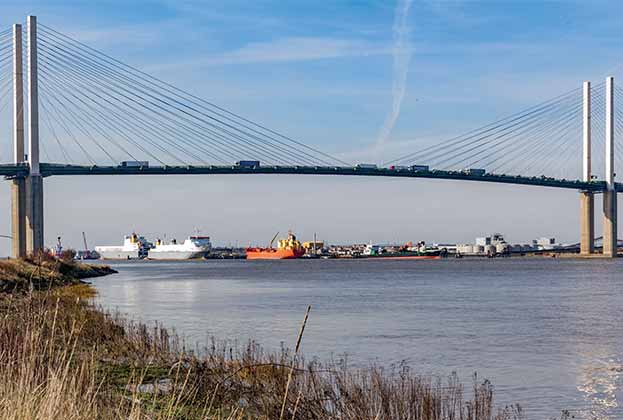Unlocking development opportunities across Kent and East Sussex
Bridging the divide
The county’s connectivity to London is considered a key factor in terms of boosting the prosperity of the region
Kent is the largest English county with a population of over 1.5 million, and a further 500,000 people live in East Sussex. The region is projected to grow to a combined population of 2.5m by 2030. GVA for the area totalled £55.3bn in 2019, driven largely by the professional, scientific and tech sector.
Its logistics infrastructure is critical for the nation as a whole. Dover alone handles around a sixth of all UK cargo vessel arrivals each year, and over £100bn of trade in goods passes through the port each year.
Future economic growth is likely to be driven by connections to London. Most of Kent and East Sussex is expected to see growth in the total numbers of jobs between 2020 and 2035 (see table, below). Dartford and Sevenoaks top the table with growth over 10% in projected employment numbers, with particularly strong growth in the professional, scientific & tech sector.
At the bottom of the table with flat or negative growth in the number of jobs are the settlements on the south coast. These areas have also seen recent weak performance, with GVA falling in Dover and Swale over the past decade.
House prices are also driven by the connection to London. Towns closer to the capital have a greater discrepancy between the incomes of those living and working in an area. We can see commuters bringing back ‘London wages’ to the towns, helping boost values beyond what the local employment base could support alone.
House prices in Kent and East Sussex were 7% and 9% higher in September 2021 than May 2020
Emily Williams, Director, Residential Research
East Sussex, and Kent in particular, therefore have a clear economic divide, and overcoming this will be a key challenge for developers and policy makers. The £75 million of Levelling Up funding already allocated to the region should act as a catalyst for bridging this divide.

Dartford Crossing
The London clock face
Kent and East Sussex are comparatively affordable in the context of the London ‘clock face’. Average house prices were £330,000 in both counties in the year to September 2021, compared to £490,000 to the west in Surrey, or £350,000 to the north in Essex. This makes the area attractive to buyers looking for value for money, but also access to London.
Values have been rising steeply however. House prices were 7% and 9% higher in September 2021 across Kent and East Sussex respectively, compared to May 2020. This puts them in line with the national average growth of 8% across that period.
This rapid growth will have exacerbated unaffordability in the area. While homes are relatively cheap in a regional context, they still typically cost eleven times the average income in East Sussex, and ten times in Kent. Both are some way above the national average of eight times. These constraints hit first-time buyers (FTBs) particularly hard, who now face an average deposit of £75,000 across the region. The deposit obstacle is likely to grow, particularly with the end of Help to Buy in 2023.
As home values rise, and the cost of living increases, the relative affordability of Kent and East Sussex will be a key advantage compared to the other home counties.
There are headwinds for developers
As with the housing market, land values have climbed rapidly over the past year, rising 7% across the South East. This has been largely driven by strong interest in strategic sites by national housebuilders, although the number of bids from Registered Providers and modular housing specialists has been climbing.
Higher build costs have been a thorn in developers’ sides, however. Developers have so far been able to offset these costs due to rising house prices. This will be harder to pass on as value growth cools off, which might see developers’ margins compressing. Sustainability is also becoming an important issue, with Kent County Council consulting on a minimum 20% uplift in biodiversity net gain for new development. These barriers may slow down housing delivery, in an area already struggling with an undersupply of homes.
The Logistics Market
Kent’s industrial market has performed strongly in recent years, with demand from third-party logistics operators, online retailers, manufacturers and grocery retailers underpinning transactional activity. The pandemic has meant leasing activity has slowed, but Brexit related uncertainty meant the market was not overbuilt at the onset of the outbreak. Continued activity levels have kept the average vacancy rate low.
Kent has seen an average of 2.25 million sq ft of space transacted per annum for units over 10,000 sq ft. Given the low supply of 3.63 million sq ft of space, this equates to just 1.6 years’ worth of supply in the region. Closer analysis suggests that a large proportion of this stock could be obsolete as it is not capable of accommodating modern occupier requirements. The strong demand and low supply dynamic has been present for much of the past decade, leading to strong rental growth. The average rent has increased from £5.33 psf in 2009 to £8.74 psf in 2022.
Demand is likely to continue to be strong, driven both by the importance of Dover as a trade centre, and newly arising demand from residential analysis. Research from the British Property Federation highlights that at present there is 69 sq ft of warehouse floorspace for every home in England. With an annual housing need of 11,980 per year, this would see 8.26 million sq ft of additional warehouse space required in the next ten years, or 231 acres assuming 20,000 sq ft per acre.

Read the articles within South East Development: Unlocking potential below
.jpg)


